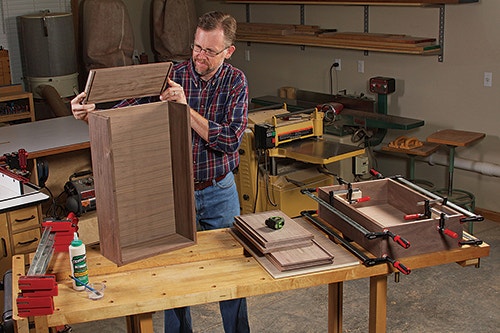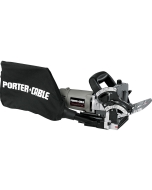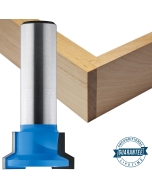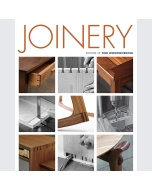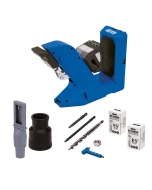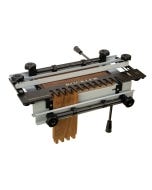Drawer Building Options
As you may have discovered, there are many ways to build a drawer box. What's your favorite? Whatever it is, your method of choice almost certainly reflects the importance you place on durability, aesthetics and last but not least, getting done fast.
In building drawer boxes, you have three joinery decisions to make: how to join the sides to the front, how to join the sides to the back, and how to join the bottom to all four. As far as we know, the last is a forgone conclusion: Nearly everyone slips the drawer bottom into a groove at the bottom of the front and sides, and either uses the "open back" method (cuts the back so that its bottom edge will end up level with the top of the groove) or grooves the back as well.
Attaching the sides the back, and especially attaching the sides to the front, is another matter. Here, opinions vary and many methods are championed. If you're new to drawer making, a good way to sample the available techniques and pick up a few techniques is to start with a joinery book.
Not surprisingly, numerous experts favor a couple of drawer construction methods: For joining the sides to the front, most prefer either half-blind dovetails (for aesthetics and durability) or some type of lock joint, such as that produced by the Drawer Lock Router Bit. When it comes to joining the sides to the back, the winners seem to be through dovetails for fancy stuff, and a simpler joint, such as a dado or rabbet and dado for production work.
But the most aggravating operation is almost always setting the bit height. Let's face it: many handheld routers make accurately setting the cut-depth a challenge under the best of circumstances. When they’re mounted in a router table, most handheld routers are maddeningly awkward and slow to adjust. On top of that, many make fine-tuning the bit height next to impossible.
Still, there are other methods to consider. For some woodworkers, a reinforced butt joint is sufficient. People use everything from biscuits to dowels and even pocket screws (later concealed by the drawer front) to shore up the strength of the inherently weak butt joint. Try some different methods out. The best option for you likely will depend on what tools you have available and your comfort and skill levels with the techniques.
Keep the inspiration coming!
Subscribe to our newsletter for more woodworking tips and tricks
